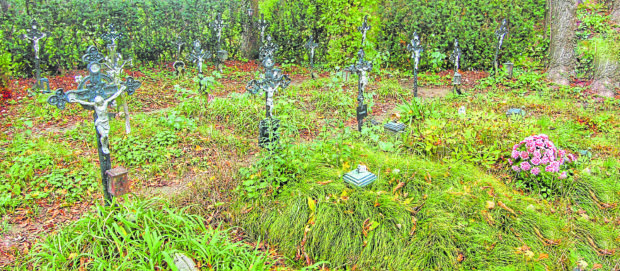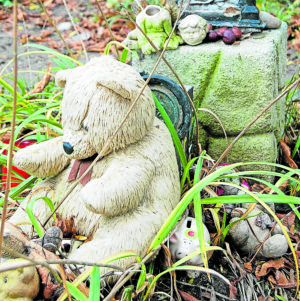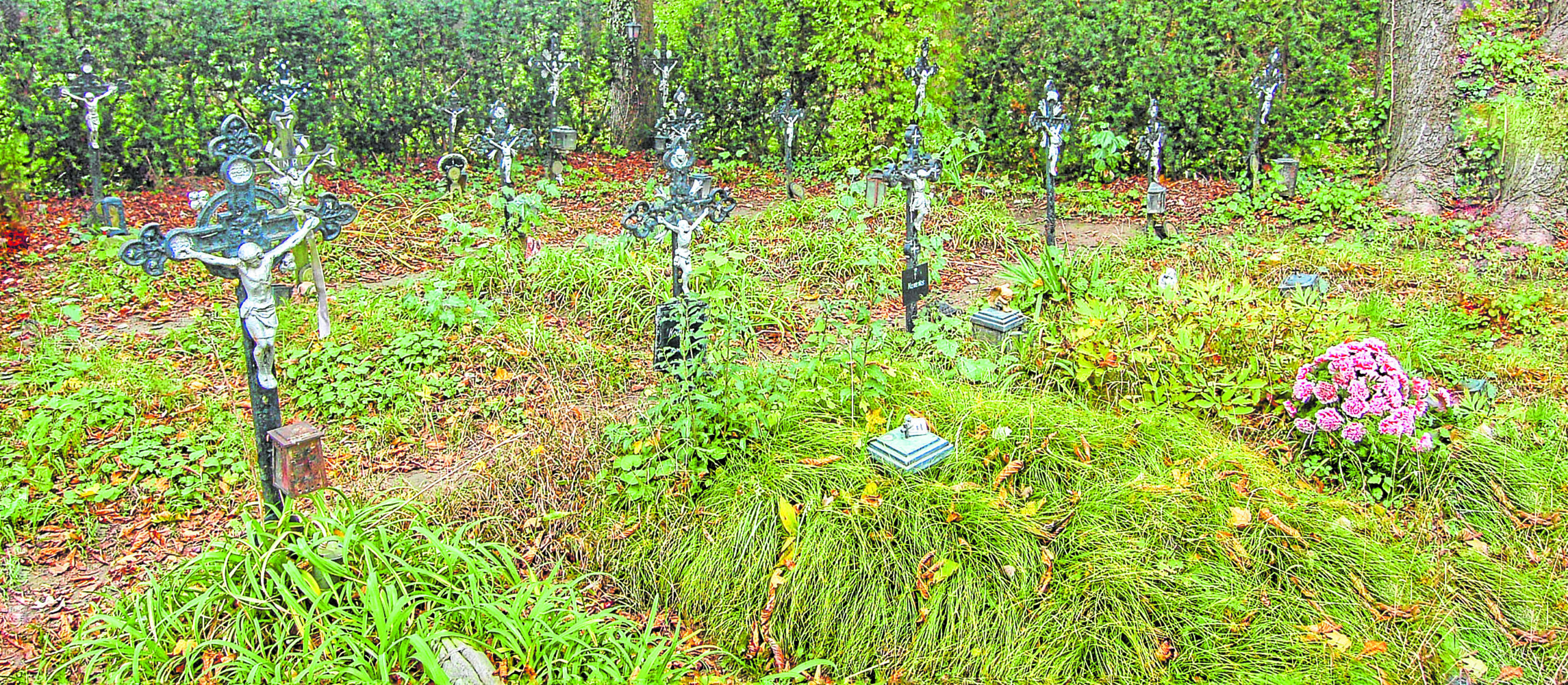
To say that Friedhof der Namenlosen (unknown people’s cemetery) is one of the loneliest places I have ever been is obvious to anyone who knows the history behind it and the environs surrounding the graves, and how the remains ended up there.
I traveled to the cemetery for almost two hours on my birthday last week on the Postbus, the Viennese suburban bus. Upon arriving, I saw two other visitors. Our only other company was the loud machinery of a nearby cement factory.
The cemetery is located in the fishing village of Kaiserebersdorf at the Alberner Hafen (port), where there are alluvial forests. Situated on the border of the 11th District (or Simmering), it is not far from the town of Schwechat in Lower Austria.
The 11th is a working-class district, home to many migrants from Eastern Europe and Turkey, who live in social council houses. It is also an industrial hub lined with numerous factories and their headquarters, enveloped in gray motorways and connecting highways, with long stretches of empty lots interspersed with crop fields and homes. It is not as charming as the Innenbezirk (1st District), which is roughly 20 kilometers away.
Old and new
A small cemetery was already there in the 17th century, as accidents often happened nearby.
The Danube River was running wild without the infrastructure that exists there today. It is said that in the old part of the cemetery, between the Damkapelle (Auferstehungskapelle, or the Resurrection Chapel) and the port entry of Albern, 478 victims of the Danube current were interred. It was abandoned in 1900 as the construction of the levees began, and nature took hold of the old cemetery.
A new one was installed to accommodate the bodies that were coming in. Between 1900 and 1940, 104 remains were recovered, but only 43 could be identified.

In 1939, after the construction of the port and the granary, the number of drowning victims dropped. Perhaps the direction of the current and the port regulations helped. The last funerals were in 1940. If new bodies were found, they were interred at the Wiener Zentralfriedhof.
After All Saints’ Day every year, the association of fisherfolk in Albern holds a ceremony by floating a raft to commemorate the victims of the Danube.
Blame “Before Sunrise” from 1995. The film inspired me to visit, though I didn’t go during my first years living in Vienna nearly 20 years ago. I remember Ethan Hawke’s and Julie Delpy’s characters walking from the Damkapelle down the stairs to the cemetery, the lawn overgrown and wild, as Celine narrated her impressions of the place the first time she was there.
Nameless and unknown
Villagers fished the victims out of the water. They were often unrecognizable because they’d been in the water too long. If a public health officer could still identify the body, relatives were informed and the remains would be given a proper burial.
Among the villagers was Josef Fuchs, the undertaker. Born in 1906, he took care of the cemetery well into the 1990s, when he was already a pensioner. He didn’t only bury the victims, but also tried to research their names. He died in 1996.
Plain wrought-iron crosses adorn the tombs, with nary an epitaph on them. Instead, there’s a silver or black metal sheet on them that reads either namenlos (nameless), unbekannt (unknown), männlich (male), or weiblich (female), perhaps with a date when the body was found. Only a handful have names on them.
Scattered old stuffed toys, worn dolls, statuettes, plastic flowers, chestnuts from trees that grow nearby, and broken lamps serve as detritus from the living who still remember, albeit not that often.
Grounding

The river was a dead end for some people, mostly the poor. It was the answer to their grief when they chose not to live anymore. One account is that of an 18-year-old maidservant from Vienna who dove to her death there.
The river was also a place for crimes. One epitaph tells the story of an 11-year-old boy who died by someone’s hands in 1904.
I find that cemeteries ground a person, no pun intended. Many Viennese cemeteries, both abandoned and new, are also used as parks, even touted as a source of energy where one can refuel one’s strength, like Vienna’s Zentralfriedhof’s Park der Ruhe und Kraft (park of calm and strength). Though cemeteries are often viewed as bleak and morbid, they are some of the quietest places on earth.
Not many know of Friedhof der Namenlosen, even among the locals. One can feel the misery seeping from the place. It is the most affecting of all, the most grounding.
Seated on one of benches, next to a dilapidated house, I read the tombstone to my right, of bikers who also met their end there. In this time of pandemic, somehow I felt a certain connection to them. This is a good time to cherish life and be grateful that I am still here.—CONTRIBUTED
The author is a Filipino living in Vienna, Austria.













































